I am never disappointed when I opt to stay at a Ryokan. My last trip to Niigata afforded us a chance to stay at a peaceful and relaxing inn at a very affordable price.
A ryokan, or traditional Japanese inn, is one of the most beautiful places you could ever stay in Japan. These small, traditional inns are mostly situated in quiet rural areas, away from the busy environment of the city.
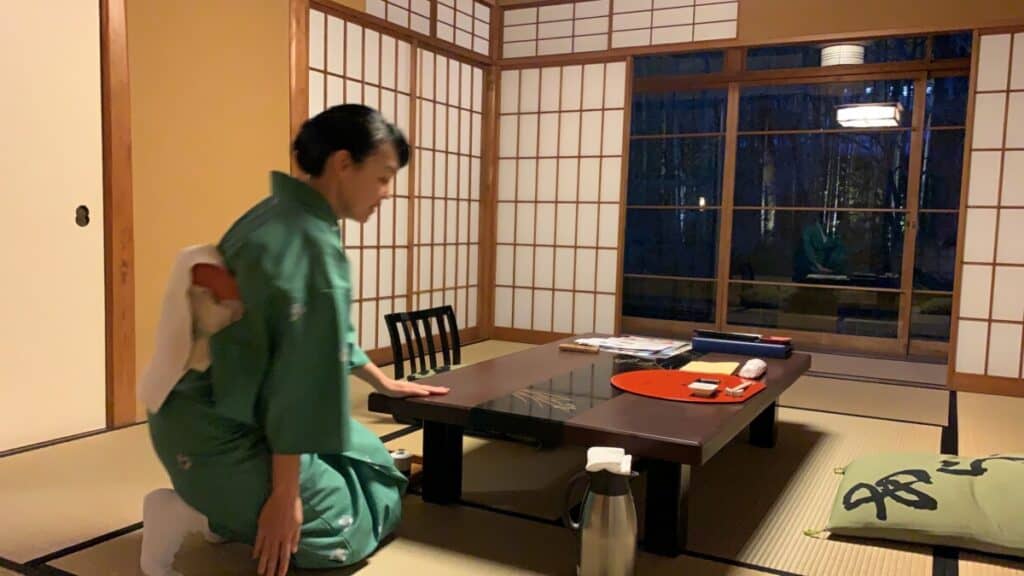
In an effort to make them even more beautiful, ryokan owners will often add some small extras and unique touches to the hotel. For example, ryokan owners may add a koi pond that is fed by rainwater, or a picturesque garden, both of which add an overall beautiful and relaxing atmosphere to the room.
When I first heard the estimated number of Ryokans in Japan I could hardly believe this was an accurate amount.
The number of Ryokan has been estimated at being over 50,000 separate locations. The definition of the ryokan is an inn in which the building, staff, and meals are in a traditional Japanese style. Guest are usually served meals in their room and sleep on a futon (traditional Japanese bedding).
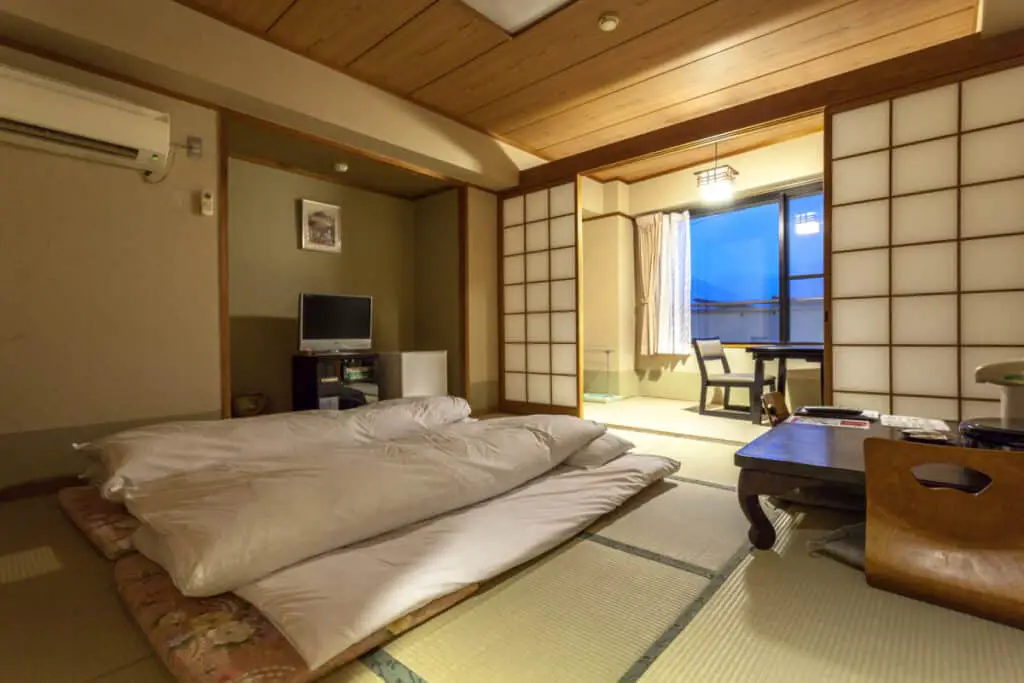
Ryokan rooms are truly a work of art. From the expertly crafted tatami mats to the wooden panels and Japanese-styled architecture of the room. Some have private bathrooms while others may have a shared communal toilet.
At many upscale ryokans, you’ll have a private bath and some have hot spring tubs overlooking a garden or water feature. Smaller ryokans may have a shared toilet room and communal bath area separated by gender. The hot spring pools may also be an indoor bathing area or an open-air one.
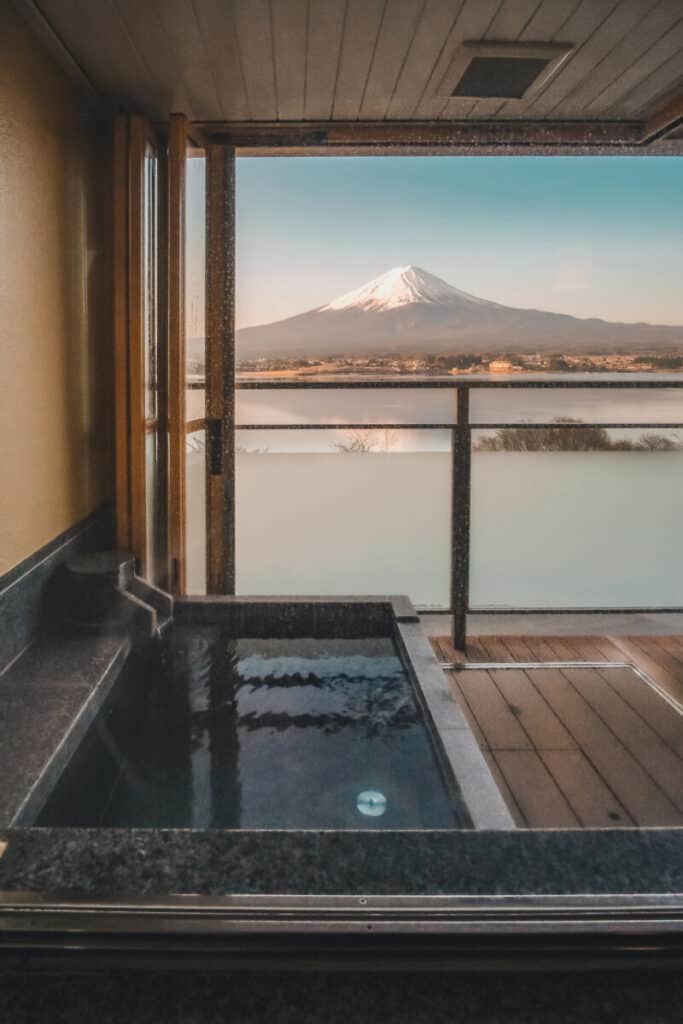
Ryokan lodgings can be found across Japan, and although they’re often much more affordable than hotels, they generally have more features and amenities than simple inns. Our trip to a traditional ryokan, Echigo-Yuzawa, was quite a cultural experience.
Ryokan prices per night can range from 15,000 to 25,000 yen per night. Prices often are per person. Many ryokans have set prices per room and the amenities each offers such as private onsen or en suite baths. Proximity to larger cities can also increase the per-night cost.
Ryokans and Onsen are often confused and sometimes combined as one. Although there are major differences between the two.
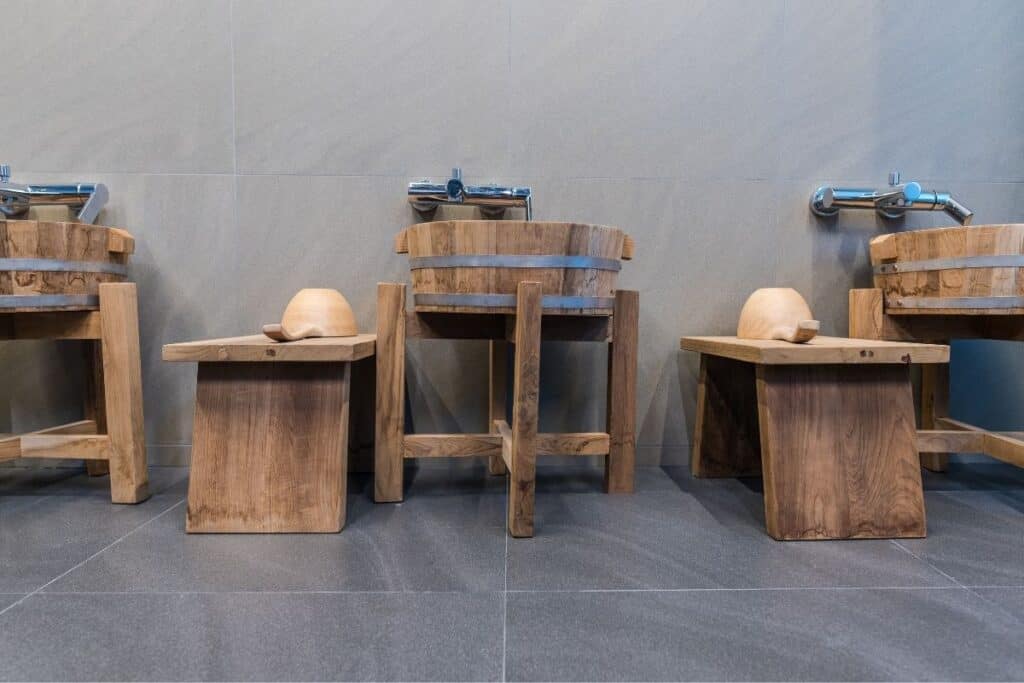
On average the Ryokan is a more private experience, geared towards multiple days of stay and offering meals and features of traditional Japanese hospitality. An onsen can simply be a communal bathhouse within a community that offers only an area of showers and mineral water pools or tubs.
The overall ryokan stay is one that has to be experienced firsthand to truly appreciate how great they are.
Ryokans are more than a place to sleep, but instead, a place where you can get in touch with your mind, body, and soul. The Japanese ryokan offers a fusion of the Japanese tea ceremony, traditional arts, and hospitality, and attentive customer service to create a unique experience for travelers.
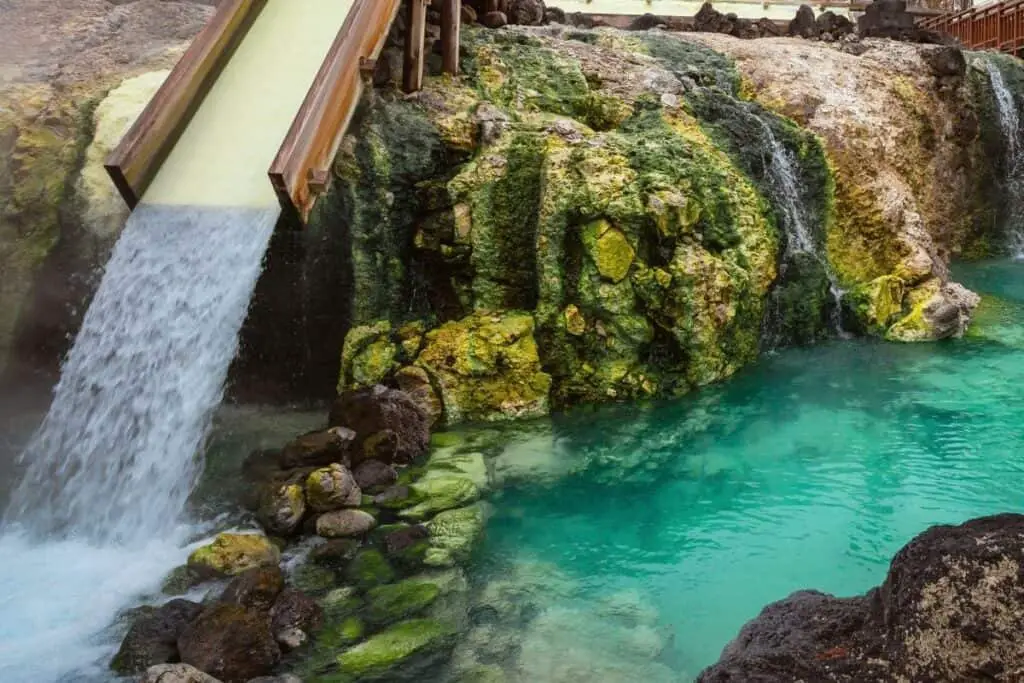
Many offer only two meals per day, breakfast and dinner. Lunch may have an extra charge if there is an onsite restaurant or if any are in the immediate vicinity.
As a general rule, the daily rate will include meals. Most commonly depending on your arrival time dinner will be provided your first evening and the next morning breakfast as well. Lunch may not be provided or is separate from your room amenities. Meals can have up to 10-12 separate dishes.
After checking in you are provided with everything you need to relax in style (even your clothing).
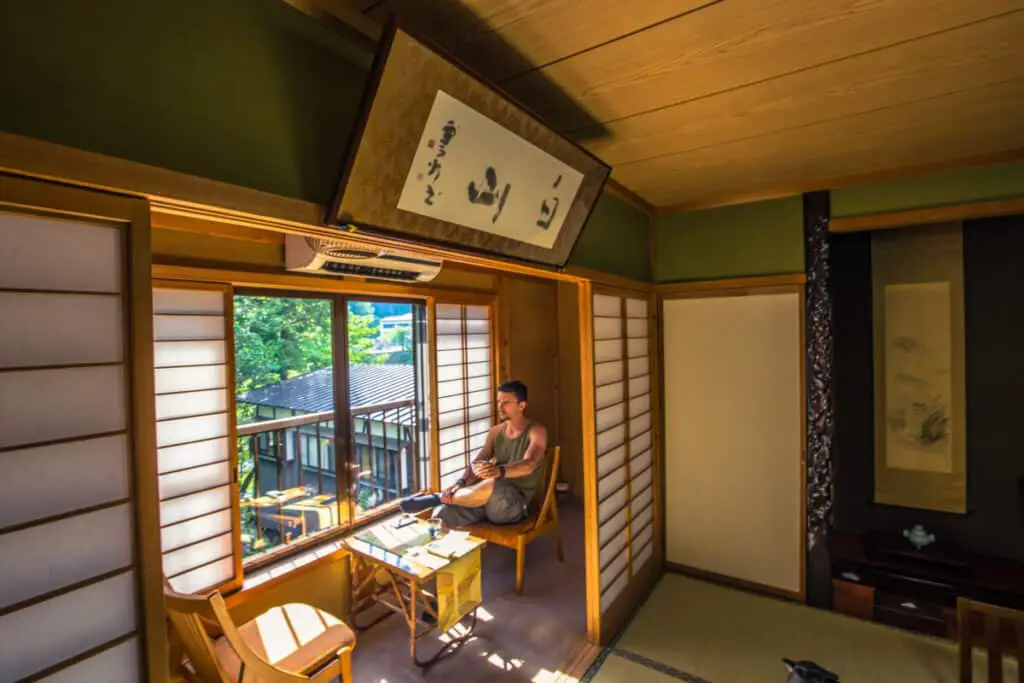
Yukatas are a type of Kimono that is provided as casual wear by most ryokan, while in your room or while heading to the onsen if it is in a common area. Yukatas can even be worn outside of the Ryokan itself in the towns and areas that may surround them.
What exactly is the Yukata?
Yukatas are essentially a kimono, but with soft cotton lining instead of traditional silk. A yukata is a loose-fitting garment, worn over your underwear that has an obi (sash) wrapped around the waist. The obi is usually decorated with a colorful design, and often has a tassel hanging from the end.
How exactly you should put on your yukata?
- Put your Yukata on over your underwear
- Socks are optional on or off
- Open both sides of the Yukata
- Fold the left side in first
- Now fold the right side over the left
- Take your obi belt
- Wrap the belt around to the back
- Cross the belt over your back
- Tie in the front under at your hips
Ryokans experiences tend to be for only a short time and many often ask what is a adequate amount of time to experience.
On average most people spend about 2-3 nights at a Ryokan. Some luxury ryokan can be very expensive and thus spending more than a few nights there can quickly add up. it is a great addition to an overall trip to Japan and can add an authentic feeling to your trip as a whole.
DINNER
Dinner is a true feast for the eyes and the taste buds. They are expertly prepared and give more than a glimpse into traditional Japanese meals.
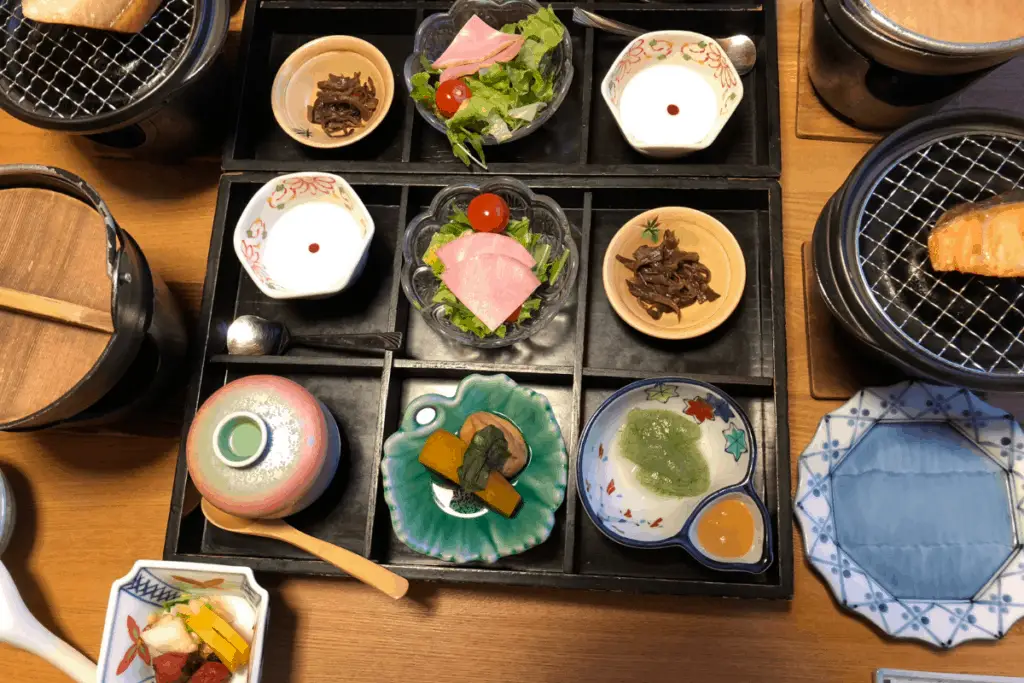
Ryokan dinners are made up of many types of dishes. Commonly included are Miso soup, Sashimi, boiled or steamed vegetables, grilled fish or beef, deep-fried seafood (tempura), steamed custard, vinegar seafood or vegetables, rice, pickled vegetables, and a sweet dessert of fruit or sorbet.
BREAKFAST
Breakfast is a somewhat smaller meal than dinner but is equally well prepared and makes waking up at the Ryokan a true culinary experience.
In total, the Ryokan breakfast is made of rice, miso soup, pickled vegetables, grilled fish, tofu, eggs, salad, vegetables, natto (fermented soybeans), and tea.
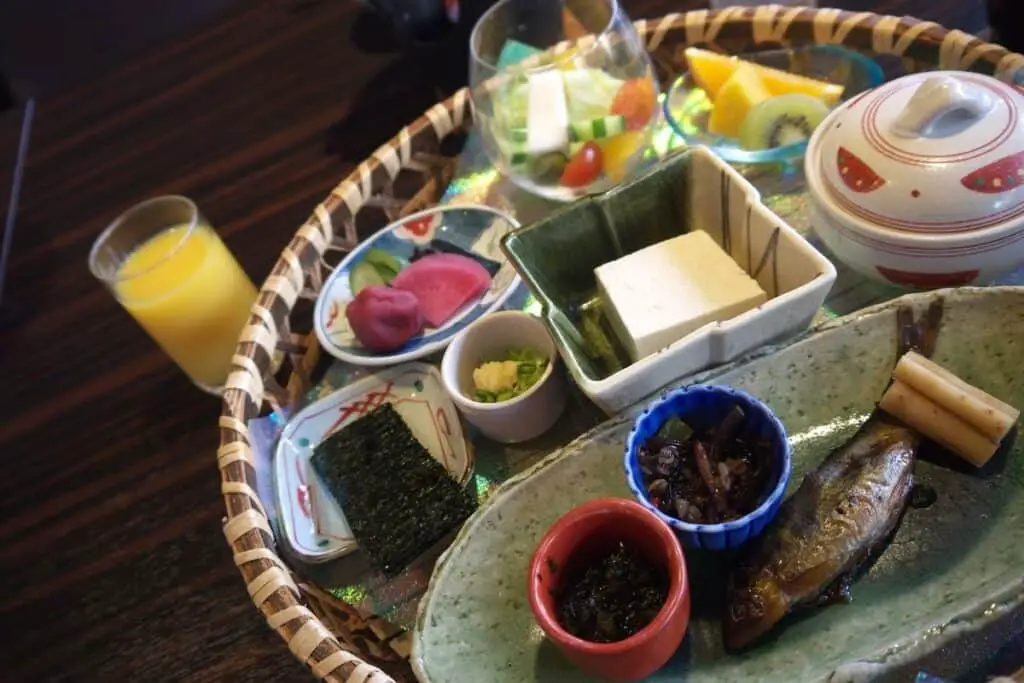
Ryokans are as varied as the people of Japan. Activities can range from strolling in the manicured gardens to enjoying the koi ponds.
Some offer nighttime activities such as karaoke or having a drink at the on-site bar if it is a larger ryokan. Many of the areas surrounding the ryokans are often geared towards the guest of these inns.
It’s best to check on the amenities offered at each one to make sure it’s what you’re expecting. Some smaller establishments might be far off the beaten path and may have limited activities outside of the Ryokan.
Others may be located near large towns or cities which will offer a myriad of activities. It’s just whatever your personal preference is and what your overall desire to experience while staying in these traditional inns.
CHECKOUT PROCEDURE
Checkout times are fairly standard as with hotels and inns. Generally, the checkout will be at 10 or 11 am. On the morning of your departure, the staff will put away your futon as they may have prepared it before your arrival.
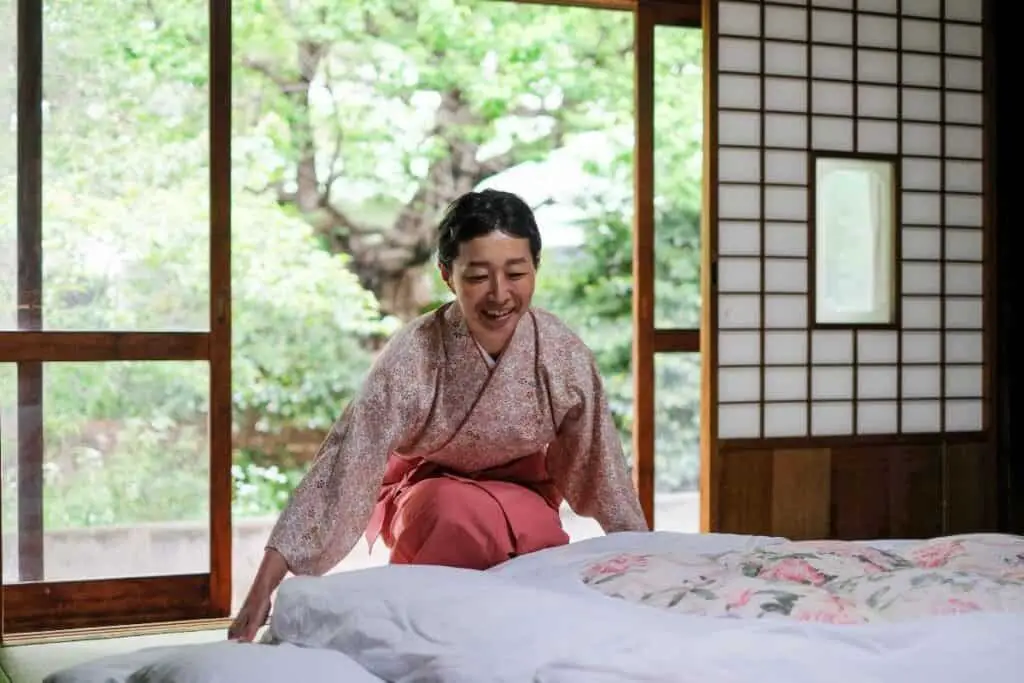
There is commonly a checkout desk or small lobby in most ryokan. Guest are sometimes offered tea or a beverage upon leaving. Most do take major credit cards but some smaller establishments may not.
Make sure you check before making your arrangements as cash machines may not be on-premises as well.
At many ryokans, the staff will make you feel as though you were family and as with most business in Japan that has direct customer service it is always impeccable and can’t compare to anywhere in the world.
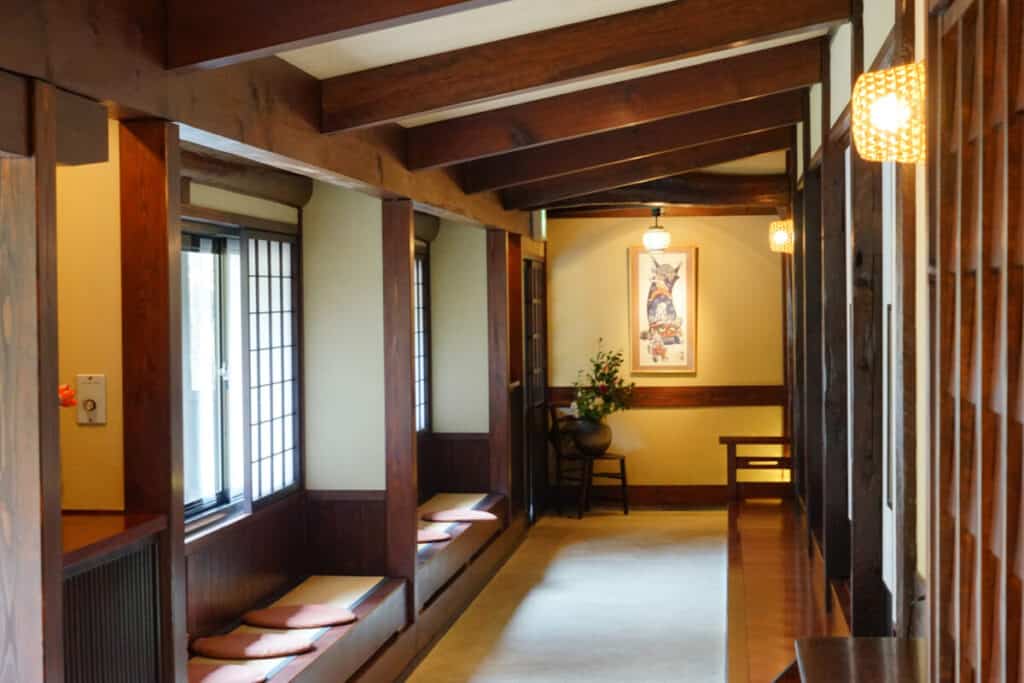
A friend of mine who lived in Japan for over 20 years once made the comment to me before my first visit that there was a common saying in Japan. “The customer is God.”
I laughed when he first told me this, but in reality, you are at minimum treated like a king at the traditional Japanese and humble ryokan.









